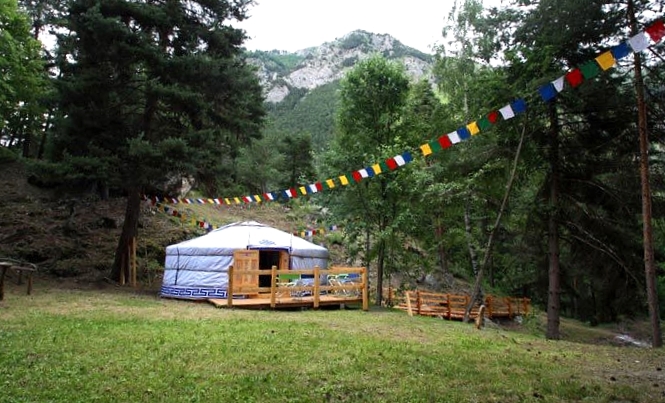One of the questions people often ask is why we chose to live in a yurt.
When we started to plan this little adventure, we thought about bringing with us an Airstream travel trailer as a long-term temporary place to live while we worked on more permanent housing. This would give us all the conventional amenities in a compact and low-impact format with high quality craftsmanship and proven durability and security. After looking at the price of used Airstreams in the size and condition we were after, we found that most of the options were well out of our price range. Not to mention that we would have a hard time actually bringing the trailer up the rugged road and situating it on the site. We’d also have to deal with pump out and all the associated grid-tied maintenance typically associated with RV parks if we didn’t invest in re-configuring the major systems. Soooo… We thought about alternatives like modifying a shipping container or pre-fab shed, or building a typical log cabin. While any of these options would have certainly met our needs, they were all just so square. Literally. I mean, if you are going to start from scratch, why not take the opportunity to create more organic surroundings that don’t resemble the world we are trying to leave behind?
After further research, we discovered that people have been living for thousands of years in brutal climates with very simple housing. Enter the Mongolian yurt. There are many versions of the Mongolian roundhouse to include modern styles made with man-made materials that are used at some high-end mountain resorts and beach-side retreats. But, the traditional version was designed to be portable, easy to assemble, aesthetically-pleasing, and very easy on the Earth.
We found some guidance on DIY, but ultimately decided on the authentic Groovy Yurt that is made-to-order and beautifully decorated in Mongolia. The basic configuration is made of organic materials to include a wooden “baby gate-like” lattice wall, solid door, and roof struts that form a dome with open skylight for ventilation and light, then covered with a thick wool felt insulation layer and a water resistant cotton canvas outer shell. (We did opt for a modern synthetic moisture barrier to go under the canvas because we expect a lot of snowfall where we are.) All of this sits on an insulated wooden platform that we will put atop an elevated wooden deck sized to double the 350SF interior living space during mild weather.
There are many upgrades to be had with adding inside electricity, heat, fresh and waste water, but these systems will be the topic of future posts, so watch this space for more!



4 thoughts on “Why a yurt?”
Comments are closed.